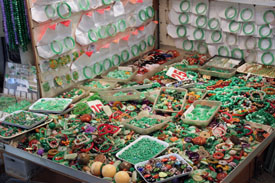By: Ivette Figueroa
Ditch the dull with cosmetic teeth whitening to keep your smile bright!
There’s nothing that says more about your character than your smile. While a wide smile radiates confidence and self-assurance, a tight-lipped smile can cast a negative light. Worse yet, a dull, lackluster grin can be a big age giveaway.
For Monica Bouldin, a 44-year-old advertising and marketing executive in Los Angeles, Calif., a noticeably dull smile was all the convincing it took to put herself in the hands of Brian LeSage, DDS, a cosmetic dentist at the Beverly Hills Institute of Dental Esthetics in Beverly Hills, Calif.
“I am a heavy coffee and wine drinker and an occasional smoker, and I started noticing that my teeth were getting yellow,” she said. “About two years ago, Dr. LeSage showed me my options and I decided on Zoom! teeth whitening. It was quick, easy and I had no sensitivity afterwards.”
“Teeth whitening is so simple and so predictable,” says Dr. LeSage. “And I never met anyone who didn’t want to look a little younger. Having whiter teeth can take five to 10 years off your look.”
Shade Savvy
We all start out with brilliant white teeth, thanks to their porcelain-like enamel surface. But over the years, enamel is worn down, becoming more transparent and permitting the yellow color of dentin—the tooth’s core material—to show through.
“Almost anyone can benefit from teeth whitening,” says Dr. LeSage. But the number of shades you can whiten depends on the type of stains your teeth have absorbed.
If you have stains from dark-colored beverages, foods, smoking and from regular wear and tear, you can get good results from teeth whitening.
“If your teeth are yellow, this almost always means that the pigment absorbed is superficial and can be improved dramatically by teeth whitening,” says Jeffrey Golub-Evans, DDS, a New York-based cosmetic dentist and accredited fellow of the American Academy of Cosmetic Dentistry.
If you have discoloration that results from trauma, prolonged use of tobacco or exposure to minerals during tooth formation (like tetracycline), these stains are almost impossible to remove.
“If your teeth are grey, don’t waste your money or time on bleaching,” says Dr. Golub-Evans. “The stains are internal, probably caused by some antibiotic or something you ate that has come up to the hollows of your teeth and no bleach on the surface can change that.”
Surface Solutions
There are three major teeth whitening options available today, all of which use different concentrations of peroxide for various lengths of time.
1. Over-the-counter (OTC) whitening kits that come with a bleaching gel and a one-size-fits-all tray, whitening strips or paint-on applicators. While easy on the pocketbook, results can take upwards of one to two weeks.
2. Professionally dispensed whitening kits that incorporate the same lower-concentration peroxide gel that the OTC kits use, but the trays are custom-fitted to the patient’s teeth.
3. In-office teeth whitening, such as Zoom! or Power teeth whitening, a high-concentration peroxide gel is applied for 45 minutes to an hour, to whiten a patient’s teeth anywhere from two to nine shades that same day. Most cosmetic dentists also give their patients a customized home-use whitening tray for touch-ups.
Dr. Bruce Lein, a cosmetic dentist in Jupiter, Fla., prefers option #2. “With customized bleaching trays, the results are somewhat reversible and if the patient notices their teeth are getting sensitive one night, they can skip a day before continuing with the treatment,” he says.
“There is only one thing that whitens teeth effectively—peroxide. The lower the percentage of peroxide [such as the amounts found in OTC products], the longer you need to use it to get results,” says Dr. Golub-Evans. Plus, the generic trays are not contoured to your teeth, allowing for the possibility of a gel leak, rendering the kits far less effective.
No matter how white you go, if you have bonding, dental crowns or veneers, these will maintain their original color. “When someone does bleach, they have to know that the bleach will only work on natural teeth,” says Dr. Lein. Many patients opt to have these replaced to match their new color. There is also the possibility of over-bleaching your teeth. “The teeth become a little too translucent or bluish in tint,” says Dr. LeSage.
After whitening, your teeth may be sensitive to temperature, pressure and touch. This usually lasts only a day or two. “Even though the percentage of peroxide in in-office whitening is high (35 percent), it is less likely to sensitize your teeth [than the OTC kits] because the contact time is less,” says Dr. Golub-Evans.
Real Results
As for those OTC kits, “Some of them work and some of them don’t. With in-office whitening, the results are guaranteed,” says Dr. LeSage.
As for Monica’s results, “It was worth it! You can see the results instantly. I told my friends, family and coworkers so when I walked into work the next day, they were all saying, ‘Let me see, let me see! Oh my God, it actually works!’ I guess it’s one of those things where, if you work in advertising, you worry about what is advertisement and what really works. [But after my procedure] I smile a lot more.”
Article reposted with permission from New You Magazine: www.newyou.com
Popularity: 25%
You Should Also Check Out This Post:
- Outdoor Living in South Florida
- Making it the Green Way
- Dreammakers for Life
- Gone to College
- Broward Landscape

















 Ivette currently works as an associate editor for Lifestyle Media Group, a Florida-based company that publishes regional lifestyle magazines. Previously, she was a copywriter for DentalPlans.com, the leading online distributor of discount dental plans. She was also the associate editor for New You Magazine, a national publication that covers the topics of cosmetic surgery, anti-aging medicine and beauty products.
Ivette currently works as an associate editor for Lifestyle Media Group, a Florida-based company that publishes regional lifestyle magazines. Previously, she was a copywriter for DentalPlans.com, the leading online distributor of discount dental plans. She was also the associate editor for New You Magazine, a national publication that covers the topics of cosmetic surgery, anti-aging medicine and beauty products.